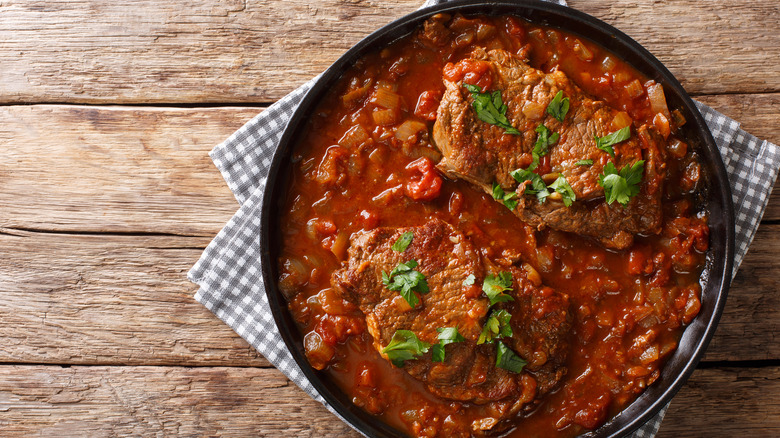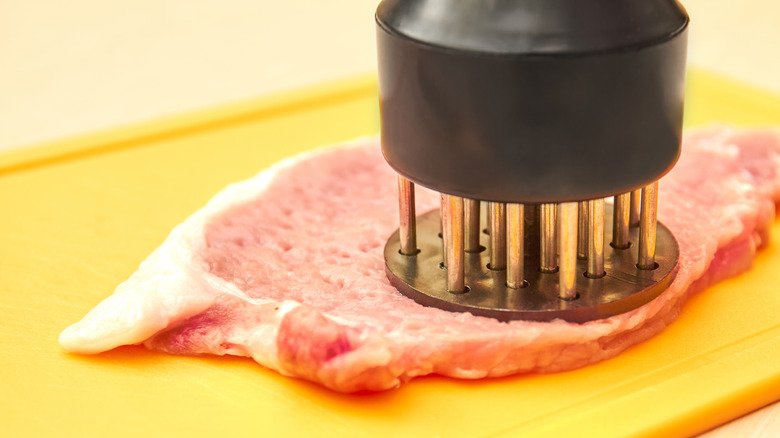The Unique Method That Inspired The Name For Swiss Steak
The thing about Swiss steak is it's not Swiss and it isn't steak — or at least not steak in the sense that it's a lovely cut of meat that's best served cooked quickly over high heat, preferably on a charcoal grill. That said, in the general sense that the main ingredient is a steak-shaped cut of beef, it does, technically, fit the bill. But the Swiss part? Definitely a misnomer.
Conceived as a budget meal, the preparation for Swiss steak calls for slow braising of tougher (and hopefully cheaper) cuts of beef like top round. Sometimes called London Broil, according to Beef It's What's For Dinner, top-round steak is a lean cut from the rump section. It's a popular choice for recipes that call for braises and marinades and is sometimes used for ground beef.
Delighted Cooking reports some of the first references to Swiss steak in American cookbooks date back to the early 20th century. By the mid-1900s, it was commonly featured in family gather-around-the-dinner-table scenes depicted in movies and on television. Wine Lovers Page dug a little deeper into the history of Swiss steak to posit the dish became mainstream during and immediately after WWII as average consumers made choices to stretch their budgets by purchasing cheaper cuts of meat. And, at about the same time, according to Culinary Lore, aluminum foil brand Reynolds gave Swiss steak a boost by running the recipe on its packaging.
And the Swiss part?
The swiss in Swiss steak has nothing to do with the Alpine nation. It's actually a reference to how the meat is prepared. According to The Spruce Eats, swissing is a method for tenderizing meat. While most recipes for Swiss steak call for pounding the meat with a mallet, there is a tool known as a swisser, that's for the job. The catch is, they're difficult to find, unless you know what you're looking for.
Search for "swiss meat tenderizer" and you'll get loads of results for mallets and grinders, but look closely and you'll see a bladed meat tenderizer in the mix. The hand-held version looks kind of like a round upside-down bed of nails. It's unlikely it will be labeled as a swisser, but it's the tool that gives Swiss steak its name.
You can also skip a step and buy pre-tenderized cubed steak. According to Beef It's What's For Dinner, cubed steak is the same cut of meat usually used for Swiss Steak. As Delighted Cooking explains, cubed steak, cut from the round or rump, is processed through an automated swisser with dozens of tiny blades. As the meat rolls through the machine, the automatic blades rapidly poke the meat making hundreds of tiny cuts, breaking connective tissue, and tenderizing it in the process.

